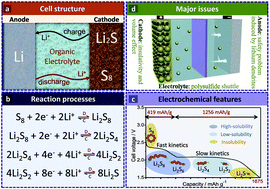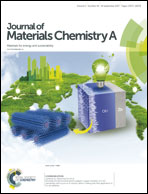Cathode materials for lithium–sulfur batteries: a practical perspective
Abstract
The most important challenge in the practical development of lithium–sulfur (Li–S) batteries is finding suitable cathode materials. Due to the complexity of this system, various factors have been investigated during the last years, but still, the roadmap for designing the best cathode candidates is not vivid. This review attempts to create a better picture of the cathode process to pave the path for developing more practical cathode materials. The most promising candidates as the host cathode material are porous carbon nanomaterials, which are highly conductive and lightweight while having the capability for fabricating freestanding electrodes. In this case, there is no need for a binder and current collector, and thus, a significantly higher energy density can be expected. Despite the good performance of these carbon-based sulfur cathodes, the presence of some additives anchoring the sulfur molecules to the electrode backbone seems necessary for practical performance. Metal oxides and sulfides are among the best options as additives, as they can act as mediators in the electrochemical redox system of Li/S. Despite their similarities, these additives might mediate in the battery system but via entirely different mechanisms. In addition to carbon nanomaterials, other porous materials, such as metal–organic frameworks, can also provide a cage-like architecture for the construction of the sulfur cathode.

- This article is part of the themed collection: Recent Review Articles


 Please wait while we load your content...
Please wait while we load your content...